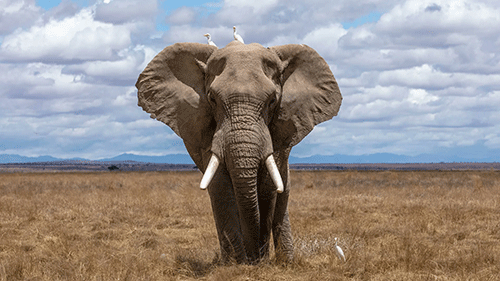Southern Africa suffered a demoralising defeat at CITES that began in Panama City last Monday when governments at the 19th Conference of the Parties (CoP19) in Panama rejected a proposal to reopen the international ivory trade.
A proposal from 10 African nations for an effective trade ban on hippos has not been recommended for adoption, and it is the same for a proposal from Zimbabwe to resume limited sales of ivory stocks.
Under the Convention on International Trade in Endangered Species (CITES), all international ivory trade is banned.
“We have a lot of soul-searching to do so that we can find each other under the banner of the African Union. The saddest moment for us was to see countries voting against a proposed advisory committee for indigenous peoples and local communities under CITES. Yet, decisions being taken here affect those people directly,” Sikumba reacted.
Sikumba affirmed SADC countries have invested substantially in conservation – and through good governance and the effective management of conservation, they have demonstrated clear successes.
“We firmly believe that CITES is an international trade convention, and it does not regulate domestic trade. Therefore, SADC will not agree to any decision aimed at interfering with the domestic affairs of our countries and our sovereignty. The positive thing is, at least, as SADC, we managed to block the potential closure of the domestic ivory markets,” Sikumba remarked.
He assured the domestic ivory market remains open, and SADC member states also continue to support the review and improvements on National Ivory Action Plan (NIAP) proposals.
“The SADC region is against the up-listing of species, which is science-based and it does not take into account the needs of the affected parties and communities,” he stressed.
SADC desperately needs sustainable finance to support building capacity and improve the effective conservation of its rich biodiversity, including iconic species.
“For instance, the SADC region is home to more than 80% of the African elephant population – more than 75% of the world rhino population and more than 70% of the African lion population. The region is the only sub-region where these populations are stable or increasing,” he said.
Equally, he informed us, biodiversity is one of the main indicators of a healthy environment, and the southern African region is home to a diverse range of the world’s megafauna and diverse flora.
“It is, therefore, important that our voice is heard, our efforts are appreciated and the voice of our local communities is amplified,” he said.
Although SADC’s perspectives are diverse and perceptions on species thought to be at increased risk of extinction due to trade vary, he said the region believes that nations should be working together towards positive conservation outcomes in the whole African region.
Sikumba pledged SADC is keen to work with other states towards achieving positive conservation outcomes.
Further, he stated drivers of biodiversity loss, such as habitat loss, over-exploitation and climate change will not be resolved through simply the listing of species.
The conference will run until 25 November, with 183 countries considering more than 100 proposals and documents submitted by governments to change the levels of protection of species of wild animals and plants that are in international trade.
Last year, environment minister Pohamba Shifeta announced that Namibia has an ivory stockpile of 69 391.71kg, worth over N$1 billion.
Namibia has over the years expressed concern over the cost and security implications of holding large ivory stocks and has reiterated the country’s stance towards the legal international trade of ivory, from which proceeds would be utilised to support elephant conservation and rural conservation programmes.


